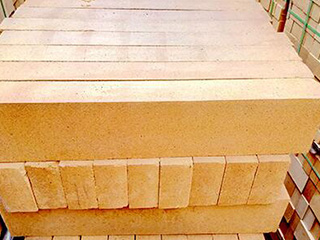Kiln bricks are a critical component of kilns used in a variety of industries, including ceramics, glass, and metallurgy. These bricks are designed to withstand high temperatures, corrosive environments, and thermal shock, making them an essential part of the kiln's performance. In this article, we will provide a guide on how to install and maintain kiln bricks for maximum performance.
Installation of Kiln Bricks
The installation of kiln bricks is a critical step in ensuring the longevity and performance of the kiln. The following are the steps involved in the installation of kiln bricks:
1.Prepare the Surface: The first step in the installation of kiln bricks is to prepare the surface where the bricks will be laid. The surface should be cleaned thoroughly, and any loose material should be removed.
2.Lay the Bottom Bricks: The bottom layer of bricks should be laid in a bed of mortar or refractory cement. The bricks should be leveled, and any excess mortar should be removed.
3.Build the Walls: Once the bottom layer of bricks has been laid, the walls of the kiln can be built. The bricks should be laid in a staggered pattern, with each layer being offset from the layer below it.
4.Cut the Bricks: As the walls of the kiln are built, it may be necessary to cut some of the bricks to fit them into place. This can be done using a saw or chisel.
5.Fill in Gaps: Once the walls of the kiln have been built, any gaps between the bricks should be filled with refractory cement or mortar.
6.Install the Arch: The final step in the installation of kiln bricks is to install the arch. The arch should be built using special arch bricks, which are designed to bend to form the curved shape of the kiln's roof.

Maintenance of Kiln Bricks
Regular maintenance of kiln bricks is essential to ensure their maximum performance and longevity. The following are some tips for maintaining kiln bricks:
1.Inspect Regularly: Kiln bricks should be inspected regularly for any signs of wear or damage. Any cracks or gaps should be filled immediately to prevent further damage.
2.Clean the Surface: The surface of the kiln bricks should be cleaned regularly to remove any dirt, dust, or debris. This can be done using a wire brush or scraper.
3.Use High-Quality Refractory Cement: When repairing or filling gaps between kiln bricks, it is essential to use high-quality refractory cement. Low-quality cement can break down quickly and cause further damage to the kiln bricks.
4.Replace Damaged Bricks: If any kiln bricks are damaged beyond repair, they should be replaced immediately. Leaving damaged bricks in place can cause further damage to the kiln and decrease its performance.
5.Monitor Temperature: Kiln bricks should be monitored regularly to ensure that they are not being subjected to temperatures that exceed their maximum temperature rating. Excessive heat can cause the bricks to crack or warp, reducing their performance.
6.Use Proper Kiln Loading Techniques: Proper loading techniques should be used when loading the kiln to prevent damage to the kiln bricks. Heavy items should be placed on the bottom of the kiln, and the load should be evenly distributed.
Conclusion
The installation and maintenance of kiln bricks are essential to ensure the maximum performance and longevity of the kiln. Proper installation techniques, including preparing the surface, laying the bricks, and building the walls, should be followed to ensure the bricks are laid correctly. Regular maintenance, including inspection, cleaning, and replacing damaged bricks, should be performed to keep the kiln in optimal condition. Following these tips can help to extend the life of the kiln and ensure its maximum performance,ultimately leading to cost savings and improved productivity in the industries that rely on kilns. It is important to note that different types of kiln bricks are designed for different temperatures and environments, and it is essential to select the appropriate bricks for the specific kiln and application. Consulting with experts in the field can help ensure that the correct bricks are selected and installed correctly.
In summary, the installation and maintenance of kiln bricks are crucial to ensure the maximum performance and longevity of the kiln. Following proper installation techniques, regular maintenance, and selecting the appropriate bricks for the specific kiln and application can help to extend the life of the kiln and optimize its performance. As technology continues to advance, we can expect to see further innovation and improvements in the design and performance of kiln bricks, leading to the development of more durable and efficient kiln materials.
Contact: Mgr. Han
Phone: 0086-13589497465
Email: 1255953279@qq.com
Add: Industrial Area of Lingzi Town,Zichuan District,Zibo City, Shandong,China